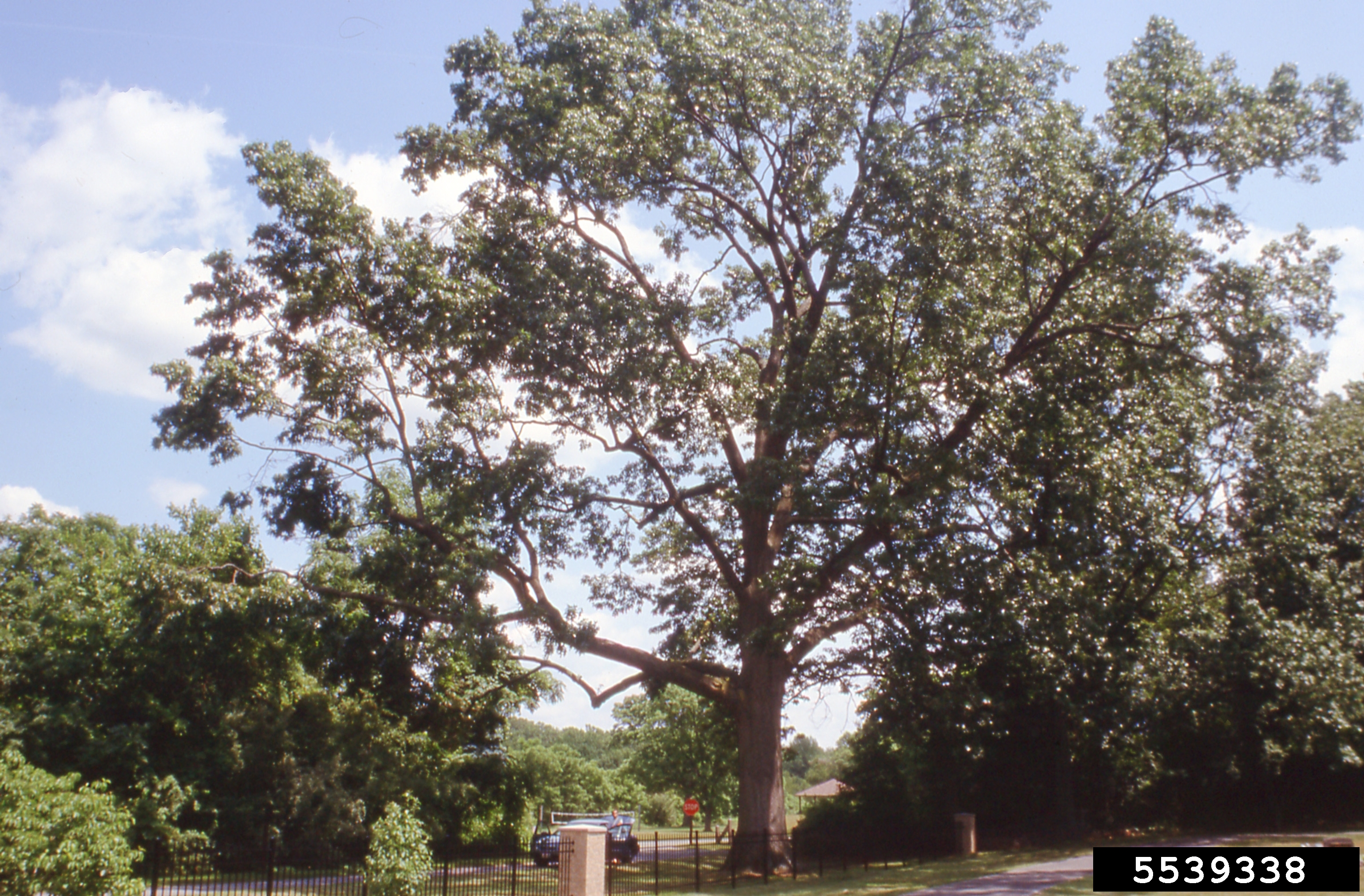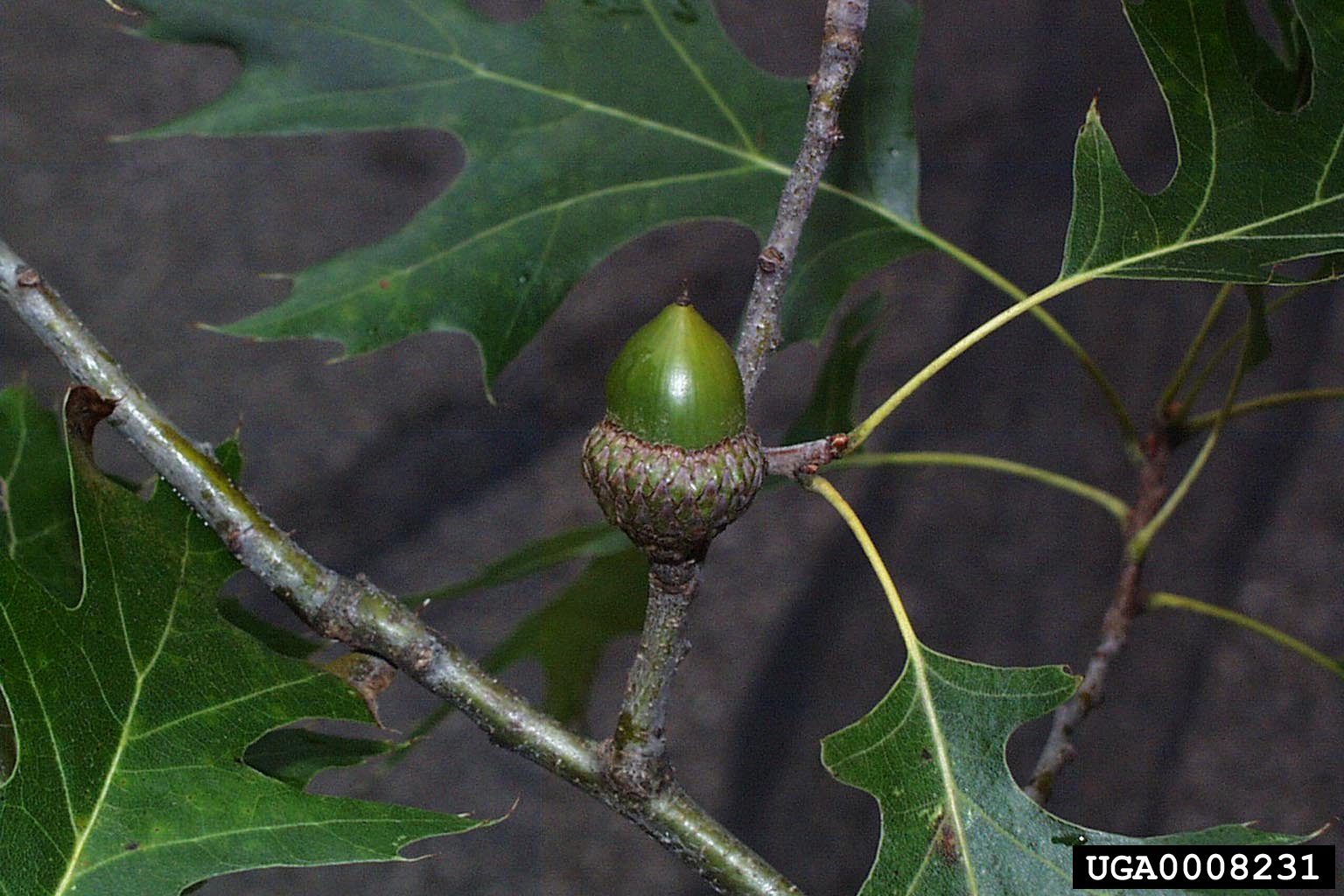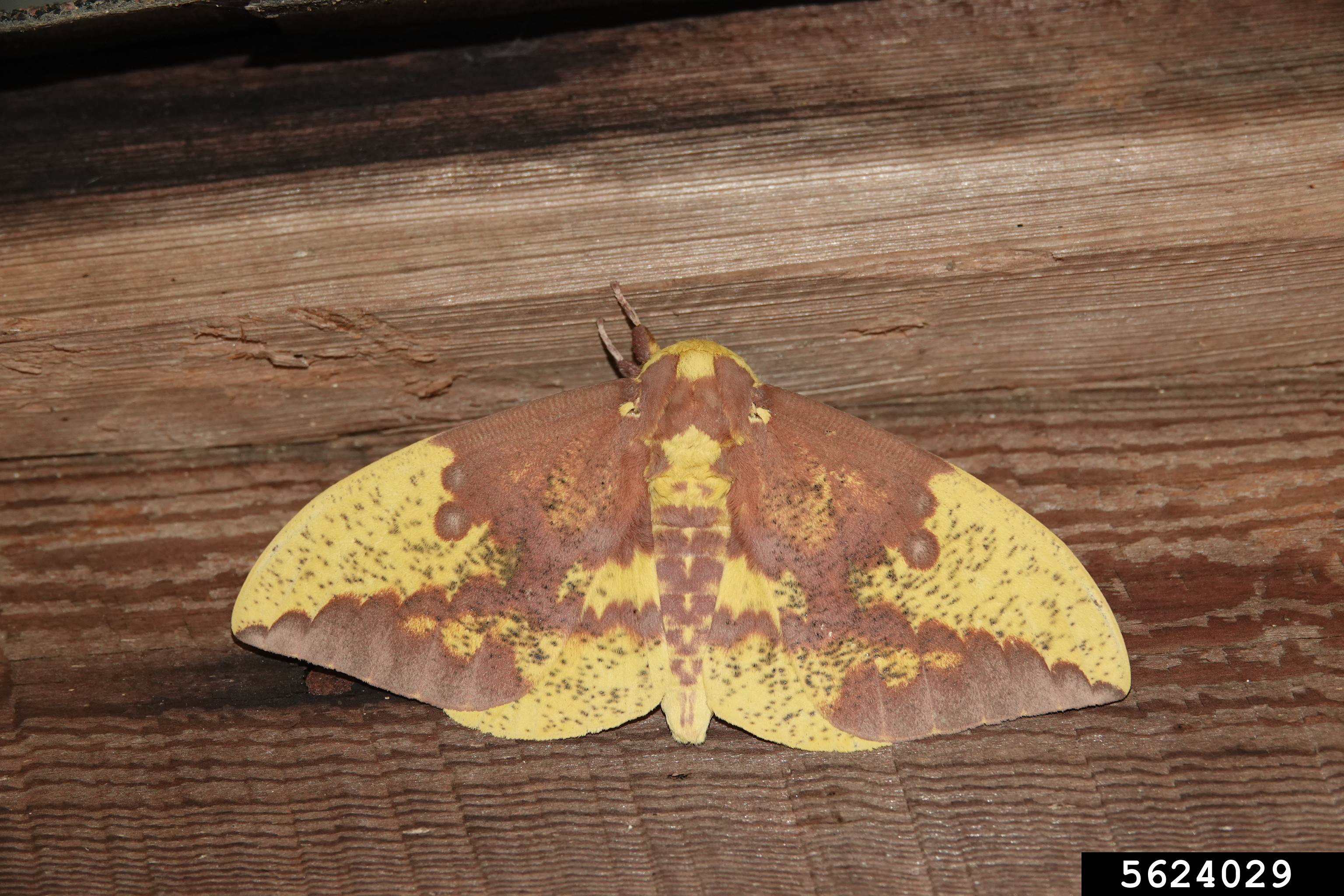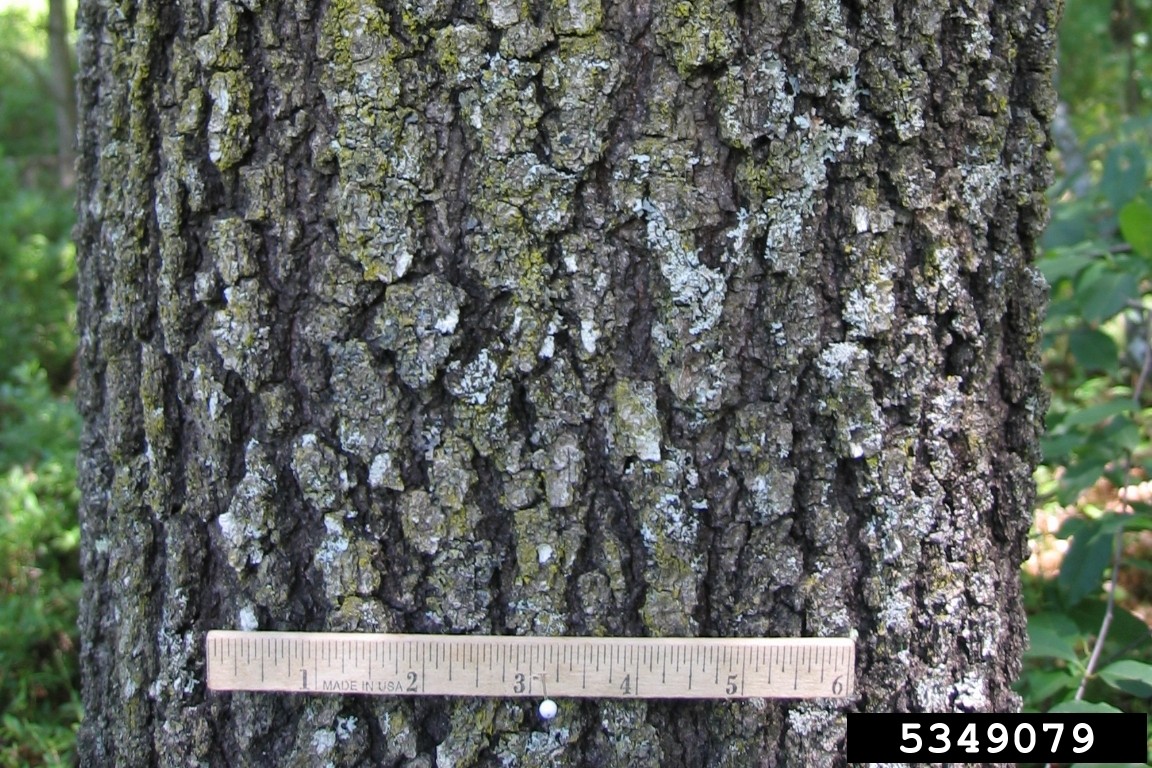Tree highlight: black oak
Black oak
Quercus velutina (Family: Fagaceae)

Black oak trees have a wide, globular canopy
The basics
Black oak is a medium size oak that grows in upland hills and ridges in the central and eastern US. Black oaks usually grow 50-80 feet tall and have a wide, globular crown. Mature trees have very dark bark, which gives them their common name. Black oak belongs to the red oak group: distinguishing the tree based on leaf shape can be tricky! See here how to tell black oak and northern red oaks apart. And see here to learn how to distinguish all oak species! Black oak is a good timber tree, and thanks to the acorns that oaks produce, it is very important for wildlife.
Did you know?
- The black oak scientific name, “velutina,” refers to the downy hair covering young buds and leaves, giving them a soft, velvety texture
- In the southernmost states, black oak is an evergreen and keeps its leaves all winter.
- The national champion black oak for 2024 stands 113 ft tall with a crown spread of over 80 ft and is located in Virginia Beach, VA.
- Like most oaks, black acorns can be eaten after boiling to leach out tannins (bitter taste).
Black oak acorns are eaten by many animals and can be eaten by humans, too.
Caterpillars of imperial moths rely on black oak leaves as a food source.
Wildlife
- Caterpillars of many moth species, such as the large imperial moth, rely on oak leaves as their main food source.
- Acorns are valued food for black bears, white-tailed deer, wild turkey, blue jays and woodpeckers.
- Cavities in large black oaks are inhabited by small mammals and cavity nesting birds such as the northern flicker.
Uses
- Similar to northern red oak, black oak produces very good timber, used for making flooring, furniture and cabinetry.
- Black oaks are usually found in the forest, but are excellent street, landscape, and urban trees and can also be used for windbreaks.
- Black oak bark is used in traditional medicine for treating bronchial infections and indigestion.
Black oak's common name refers to the dark bark of mature trees.
Benefits
Over a 20-year period, a healthy black oak with a diameter of 15 inches will offset 9,101 car miles worth of CO2, absorb enough stormwater to fill 1,173 bathtubs, and remove an amount of pollution from the air – in gaseous and particulate form – equivalent in weight to 69 smartphones! Learn more at: https://mytree.itreetools.org
Black oak Tree of the Week video
By University of Kentucky Forestry and Natural Resources Extension.
Click to watchContact us: ufi@uky.edu
Images sourced from forestyimages.org




